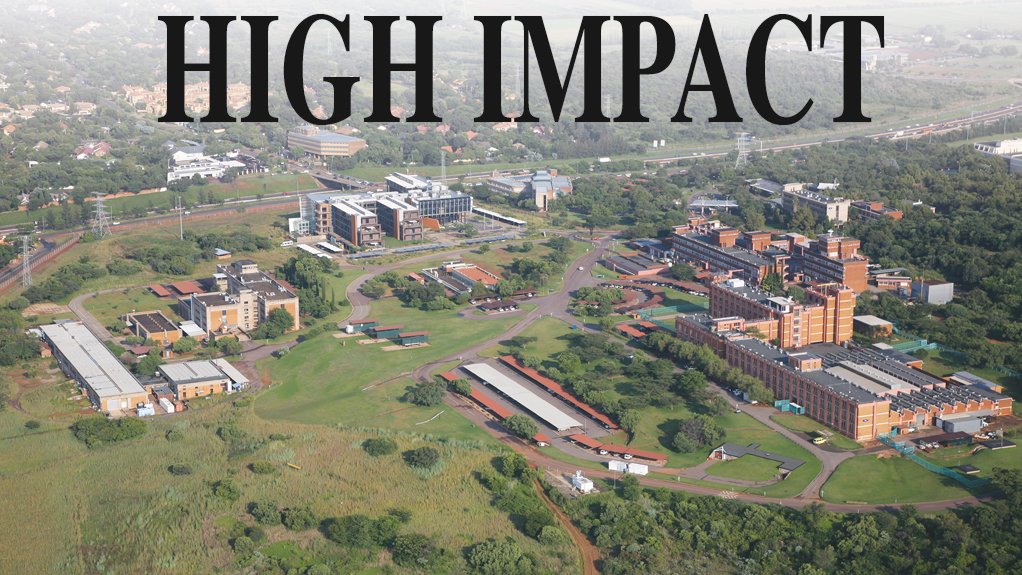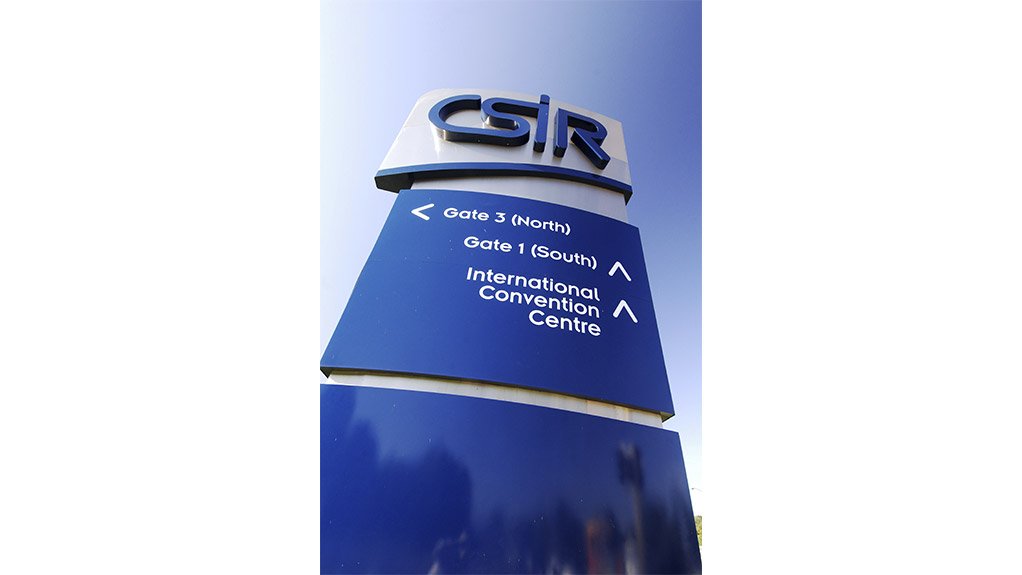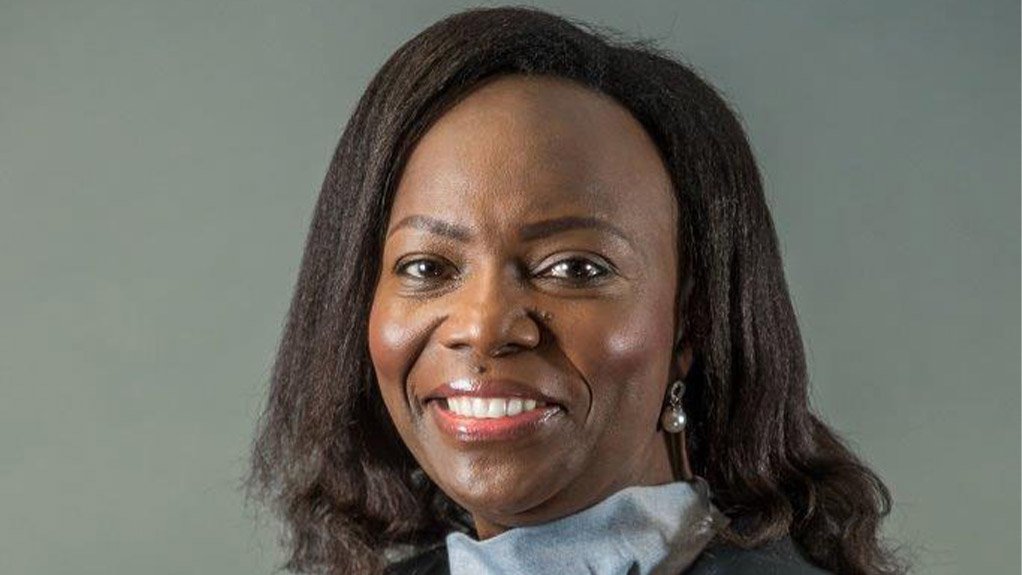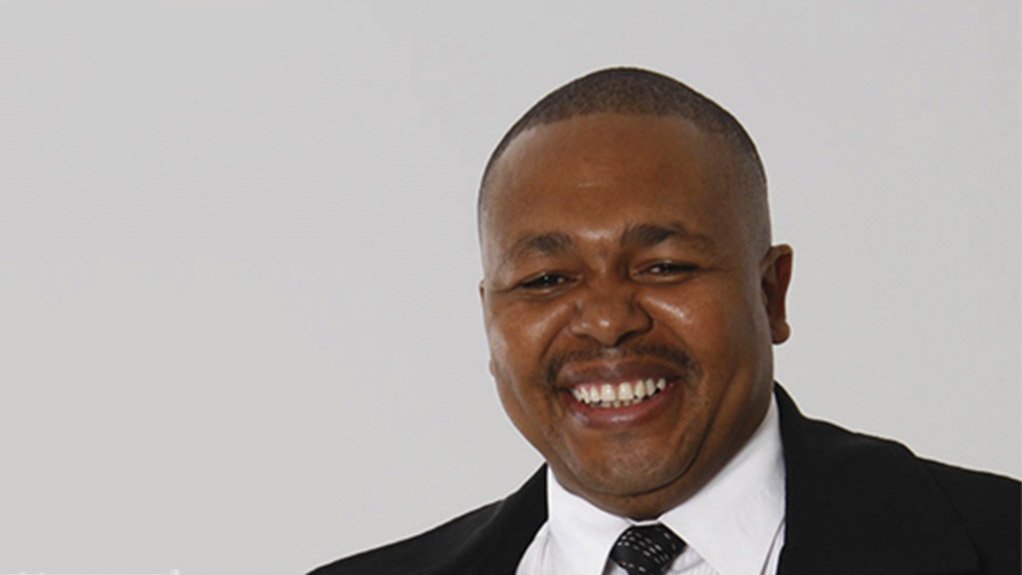Industrial development at heart of CSIR’s new-look strategy






Photo by CSIR
THULANI DLAMINI Our new course is building on the past
Photo by CSIR
DR RACHEL CHIKWAMBA: We have integrated Business Development and Commercialisation in each division
Photo by CSIR
DR MOTODI MASERUMULE: We’re already negotiating with the private sector
Photo by CSIR
In late May, the Council for Scientific and Industrial Research (CSIR), represented by board chairperson Professor Thokozani Majozi and CEO Dr Thulani Dlamini, announced it had developed and adopted a new strategy and structure. The fundamental objective of this new approach, created under a programme called Project Synapse, is to strengthen the CSIR’s support for, and development of, South African industry.
Dlamini tells Engineering News that the new strategy and structure represent the CSIR’s ‘Fourth Era’. The first era, he explains, ran from the foundation of the CSIR in 1945 to the late 1980s. That era was characterised by total State funding of the science council, so it did not have to earn any income. But, in the late 1980s, came the realisation that the State could no longer completely fund the CSIR and that the organisation had to undertake contract research to earn income. This was the second era of the CSIR. Near the end of the 1990s, a review was done of the science council, which revealed that it had lost its scientific capabilities and had developed a short-term research focus. This resulted in a shift in policy to stress and redevelop its scientific capabilities and to restore a longer-term research focus, and this policy marked the CSIR’s third era.
With its scientific capabilities re-established, the CSIR was now able to relook at its role in South Africa’s economy and society. “Our legislative mandate clearly states what the CSIR is about – performing directed research and technological innovation that foster scientific and industrial development,” he highlights. “If we look at what we have done, it is clear that we have been very successful in terms of developing a strong scientific capability, including developing skills. It is clear that we have not done enough in translating this to contribute to industrial development.”
Hence, the new focus, the new, fourth, era. “Our new course is not about abandoning the past, but building on the past. We want to emphasise that we remain true to our mandate as a science council, but a science council that, as our mandate says, undertakes directed research,” he assures. “We are not a university. We have to make an impact on government, society and industry. Many people misunderstand this, thinking we will no longer invest in basic research. This is not true. To advance new technologies, we need to develop understanding of the science and engineering principles underlying those new technologies. We will still do basic research, but it will be aimed at supporting technology development.”
The new strategy has four main objectives, he elucidates – first, growth: increasing the growth of the South African economy but also growing the CSIR itself, “as we increase our relevance, particularly for the private sector”; second, sustainability: “by investing in innovation that enables South African enterprises to be globally competitive, and capacitate the State to deliver services to society, as well as ensuring the sustain- ability of the CSIR itself”; third, impact: “we transfer technologies and knowledge solutions to government and industry; and fourth, relevance: “as the CSIR, we have a role to play regarding the application of innovation in the industrialisation of South Africa and of innovation in enabling the State to deliver on its mandate – it is also about the relevance of the CSIR in the National System of Innovation”.
A major part of the CSIR’s new strategy is the commercialisation of its technologies. Commercialisation is a complex and challenging process, but the CSIR is determined to become proficient at it, so that it can truly play its mandated role. “We want these technologies to be in the market,” assures group executive: CSIR Mining, Manufacturing, Defence and Security division Dr Motodi Maserumule. “We’re already negotiating with the private sector, seeking investment to commercialise technologies we’ve developed. These would become the products of the private-sector partners concerned.” (CSIR staff involved in the development of new technologies will share in the royalties from any successful commercialisation.)
“The importance of the private sector to our new strategy cannot be overstated,” affirms Maserumule. “The private sector are in the market, they are making and trading products, they know what their customers want and need. Engaging with the private sector brings us market intelligence – what the market wants and needs. What are the technology gaps in the market? What are the anticipated future gaps? This will allow us to direct our research and development (R&D) – direct it on filling those gaps. The private sector is crucial. Industry is very important in forming our capacity to innovate and to partner with industry. Without industry, getting R&D right is very difficult. You need insight into what can be manufactured, at what cost, and what is required for it to be supportable. Industry makes money not only from selling products but also by providing after-sales support.”
New Structure
With a new focus and a new strategy, and against a global background of a rapidly emerging wave of new technologies, popularly grouped together under the rubric of the Fourth Industrial Revolution (4IR), the CSIR also had to look at its organisational structure to ensure that it would be “fit for purpose” in the new era. The first step was a review of the effectiveness of the organisation’s previous operating model; this review included both internal and external consultations.
“One of the things that came out of this process was that the then operating model made internal cooperation difficult. The CSIR operated in ‘silos’,” reports Dlamini. “Another thing was that outsiders did not have a clear idea of the CSIR, because it was not ‘market focused’. And the organi- sation lacked agility, responsiveness and rapid decision-making capability. There was also a lack of clear accountability for business development and technology transfer within the CSIR.”
These factors, as well as the new strategy, were taken into account in the restructuring of the organisation. It now has three divisions, namely Chemicals, Agriculture, Food and Health; Mining, Manufacturing, Defence and Security; and Natural Resources, Enabling Infrastructure, Public and Professional Services. (There are also supporting divisions: Legal, Compliance and Business Enablement; Human Capital; Finance; and Business Excellence and Integration.) Dlamini points out that the CSIR “never had divisions before”. Each division is led by a divisional group executive, who is also a member of the CSIR’s executive committee (ExCo). Each divisional executive has full accountability for his or her division.
“The other big change we have introduced is that, within each division, there is now an executive manager: business development and commercialisation,” he stresses. “This is to ensure that we can now drive, with more vigour, the issues of business development and commercialisation to increase our impact on the economy, government and society.”
Below, and reporting to, the three opera- ting divisions are a total of nine technology sector clusters. These are – Future Production: Chemicals; Future Production: Manufacturing; Future Production: Mining; NextGen Health; NextGen Enterprises and Institutions; Smart Mobility; Smart Places; and Defence and Security. Each cluster comprises a number of impact areas. In turn, each impact area would be subdivided into a number of research groups.
All three divisions, and their subordinate clusters and impact areas, are supported by “transversal” research centres, which have capabilities that can and will be applied across the CSIR, thereby reducing duplication, creating economies of scale, and improving efficiency. Underpinning these changes and innovations is the need for technologies for 4IR. “We are concerned with the technologies of the future,” he affirms.
No More Silos
“We now have an operational model that is designed to address our previous shortcomings,” explains acting group executive for chemicals, agriculture and next-generation health) Dr Rachel Chikwamba. (She is also the group executive responsible for the implementation of Project Synapse.) “The divisions are strategically designed. The CSIR really used to work in silos. Now, we have logical groupings of clusters making up the division, facilitating integration and cooperation. We have integrated business development and commercialisation in each division. I can’t overemphasise the importance of this. This is the proper level for this function. The business development and commercialisation function, led by executive managers, will facilitate commercialisation of our technologies, while supporting the diversification of our funding resources and bringing market intelligence to their divisions, which will inform their research programmes.”
All the divisional group executives are members of the CSIR’s ExCo. She high- lights that, previously, although the CSIR was a research, development and innovation (RDI) organisation, it had only one RDI executive on its ExCo. Now, it has three. “Internally, this ensures representation of our core business at the highest level, and gives the ExCo the authority to make strategic decisions on technology R&D,” she elucidates. “Decisions can be made effectively and rapidly at executive level. This arrangement gives the technology side of the organisation a greater influence at executive level, and gives the executive level greater insight into technology development from a strategic perspective.”
Each division has a management committee (ManCo), headed by the divisional group execu- tive, and on which all the technology cluster heads sit, including the business develop- ment and commercialisation manager, as well as the essential support executives, such as the human resources and finance managers. “These ManCos have considerable decision- making authority,” she states. “They expedite decision-making. The ManCos provide actual operational coordination and execution of the strategy. The ExCo handles the coordination of policy and the evolution of the strategy.”
Each division oversees a coherent grouping of sector-orientated technology clusters which have complementary capabilities. This arrangement creates “value propositions” that are stronger than those that could be offered by the individual clusters. Chikwamba’s own division provides an example. Its “value proposition” has the following key elements: its research centres, its “industry-facing” pilot plant infrastructure, its record of successfully completing projects (“delivery”), its R&D infrastructure and, not least, a highly skilled human capital base. “We want to expand this capability; we want industry to come and invest, especially in infrastructure associated with ‘translating’ R&D into commercial products. Such infrastructure is indispensable in addressing sectorwide innovation challenges.”
Making an Impact
Just as divisions are divided into technology clusters, so these clusters are, in turn, divided into impact areas, notes Maserumule. “Defence and Security is a technology cluster; an example of an impact area is Aeronautics Systems, which covers aircraft (including unmanned), missiles and related airborne systems. Another impact area is Radar and Electronic Warfare. Impact areas are made up of permanent research teams.” Each impact area is staffed with specialists, many of them long-term researchers. To cite the Aeronautical Systems impact area again, this contains about 60 technology specialists, mostly aero- nautical engineers.
“A cluster is run as a business,” he explains. “The head of a cluster is an executive manager, and the impact areas report to him or her. The cluster does everything from capability development to identifying business opportunities, identifying projects, and generating income. While we do measure business performance (including royalties income, staff numbers, and transformation) at impact area level, we generally aggregate this data at cluster level.”
The lowest level of the organisation that can produce a discernible impact from its work is the impact area (hence, probably, this name). “Aeronautics Systems, for example, has a very significant impact on the South African Air Force and the South African aerospace industry,” he observes. “An impact area can develop an entire system.”
Conclusion
All the divisions, technology clusters and impact areas have been set up and are now operating. The crosscutting research centres are not all yet functioning, but those that are not are currently in the process of being established.
“We aim to integrate 4IR technologies into our offerings, and thus into South African industry, thereby improving local industrial efficiency,” affirms Chikwamba. “For example, we intend to be able to model and to digitise all our technical as well as business processes, which allows us to develop new chemical products and the attendant infrastructure more safely and rapidly. But we’re not hung up on 4IR; we are also concerned with simpler and older technologies that make an impact, especially at the level of small, medium-sized and micro- enterprises (SMMEs). Support for SMMEs is very important for us, as is supporting economic transformation. And we are determined not to reinvent wheels – if a useful technology has already been developed overseas, we are interested in localising it, adapting it to our conditions, and diffusing it throughout South Africa.”
“Our engagements with industry have been very very encouraging,” highlights Dlamini. “Similarly, our engagements with public- sector entities have also been very encouraging. The new CSIR strategy is about growth, of both the economy and the CSIR itself. It’s really about growth!”
Comments
Press Office
Announcements
What's On
Subscribe to improve your user experience...
Option 1 (equivalent of R125 a month):
Receive a weekly copy of Creamer Media's Engineering News & Mining Weekly magazine
(print copy for those in South Africa and e-magazine for those outside of South Africa)
Receive daily email newsletters
Access to full search results
Access archive of magazine back copies
Access to Projects in Progress
Access to ONE Research Report of your choice in PDF format
Option 2 (equivalent of R375 a month):
All benefits from Option 1
PLUS
Access to Creamer Media's Research Channel Africa for ALL Research Reports, in PDF format, on various industrial and mining sectors
including Electricity; Water; Energy Transition; Hydrogen; Roads, Rail and Ports; Coal; Gold; Platinum; Battery Metals; etc.
Already a subscriber?
Forgotten your password?
Receive weekly copy of Creamer Media's Engineering News & Mining Weekly magazine (print copy for those in South Africa and e-magazine for those outside of South Africa)
➕
Recieve daily email newsletters
➕
Access to full search results
➕
Access archive of magazine back copies
➕
Access to Projects in Progress
➕
Access to ONE Research Report of your choice in PDF format
RESEARCH CHANNEL AFRICA
R4500 (equivalent of R375 a month)
SUBSCRIBEAll benefits from Option 1
➕
Access to Creamer Media's Research Channel Africa for ALL Research Reports on various industrial and mining sectors, in PDF format, including on:
Electricity
➕
Water
➕
Energy Transition
➕
Hydrogen
➕
Roads, Rail and Ports
➕
Coal
➕
Gold
➕
Platinum
➕
Battery Metals
➕
etc.
Receive all benefits from Option 1 or Option 2 delivered to numerous people at your company
➕
Multiple User names and Passwords for simultaneous log-ins
➕
Intranet integration access to all in your organisation






















